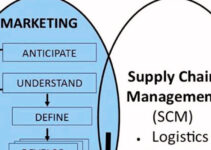The fashion industry is operating its business in a highly uncertain market environment due to the latest changing trends and fashions. The apparel and clothing industry used to follow the push model, where the retail stores and outlets pushed new outfits and designs to the market, and it failed. Nowadays, the fashion industry has to quickly respond to the needs and desires of customers. Toda, we’ll discuss Zara supply chain strategy; and key elements of its strategic approach.
According to an estimate, the developing countries are producing approximately 30% of the garments of the world and then exporting them to the developed countries. The complex supply chain network is highly reliant on the exports from the developing countries. However, the fashion industry spends a significant amount of capital on the transportation of materials.
Zara is the world’s leading retail fashion brand. The company has achieved a market leadership position in the apparel industry; the company earned a significant amount of profit through its unique profits and SC strategies.
Zara Supply Chain Strategy – Key Elements
Some of the key elements of Zara supply chain strategy are as follows;
Central Distribution Center
Zara has developed a very strong tech and IT system that backs up the company’s supply chain and distribution system. After manufacturing clothes in various production facilities across the globe, the centralized distribution system makes sure to ship the products back to the central location in Spain. After receiving finished products at the central location, Zara distributes fashion products to stores across the world relevant to their needs and requirements.
Small Batch Production
The production turnover rate of Zara is very quick and speedy, and the company produces a small quantity of every design of products. The production in small batches offers key insight to the company and comprehend what type of fashion production is selling more.
However, it is a great strategy for Zara to find new designs and styles and study the acceptance level of the market. It helps the company to decrease the risk factor of producing goods in large quantities that the customers don’t want. When you have invested a lot of resources in the production of wrong designs that the customer’s market rejected; then you would have limited resources to experiment with new designs. The optimized production system of the fashion brand employs the same material differently.
Responding to Market Demands
Zara implements the pull strategy for its supply chain and inventory management. The company’s creative team develops roundabout 1000 designs monthly relevant to the latest market trends and store sales. However, the company analyzes the spending of customers in every store and comprehends the types of products and designs customers are buying repetitively. It offers a key insight to the company’s designers about the type of designs and styles customers and what they should launch next.
Sense of Exclusivity – Small lot
Producing goods in small lots is the key element of the lean production system. Along with the benefit of decreasing waste, the main reason behind small lot production is that it helps the company develop a sense of exclusivity. It compels customers to quickly make a decision about the fashion product because it will go away tomorrow. That’s why many customers visit Zara’s retail stores to check out the latest designs, and it often increases the traffic in its stores.
Centralized Designs & Product Development
Usually, companies in the fashion industry develop some products in-house and the other outsources them to the 3rd party manufacturer. Production with 3rd party merchandisers requires back-and-forth communication. When you remove the time wastage factor, then it improves the productivity.
Work Cell Company
Just like the product development team comprises of production planner, procurement, sales, and designer; the cellular manufacturer also has a team. It helps the Zara production team to streamline its communication network and avoids time wastage.
Strict Scheduling
The store managers of Zara place orders twice a week, and they receive their ordered shipment within a day if they’re in Spain and Europe. The store managers would quickly organize the latest delivery for display for customers to check out. The strict scheduling allows managers to run things smoothly, and it decreases the waiting time.
In-House Production
Zara has invested a lot of capital resources in the in-house production system, instead of finding and working with a low-cost outsourcing company. The in-house production system offers a lot of flexibility to the company’s operations.
Automation
Zara follows and accepts Time-based competition. The automation technology in warehouse management and other processes amplifies the accuracy and speed of processes.
Implementing Regulations
Sole implementation of any of these rules and regulations won’t deliver any effective results. Zara carefully follows all the rules and strategies to maximize the result of growth and productivity.
Conclusion: Zara Supply Chain Strategy
After an in-depth study of Zara supply chain strategy; we have realized that Zara is the world’s leading retail fashion brand with a sophisticated SC strategy. If you are learning about the SC strategy of Zara, then you should keep in mind the abovementioned strategic elements.
Ahsan is an accomplished researcher and has a deep insight in worldly life affairs. He goes Live 3 days a week on various social media platforms. Other than research writing, he’s a very interesting person.


